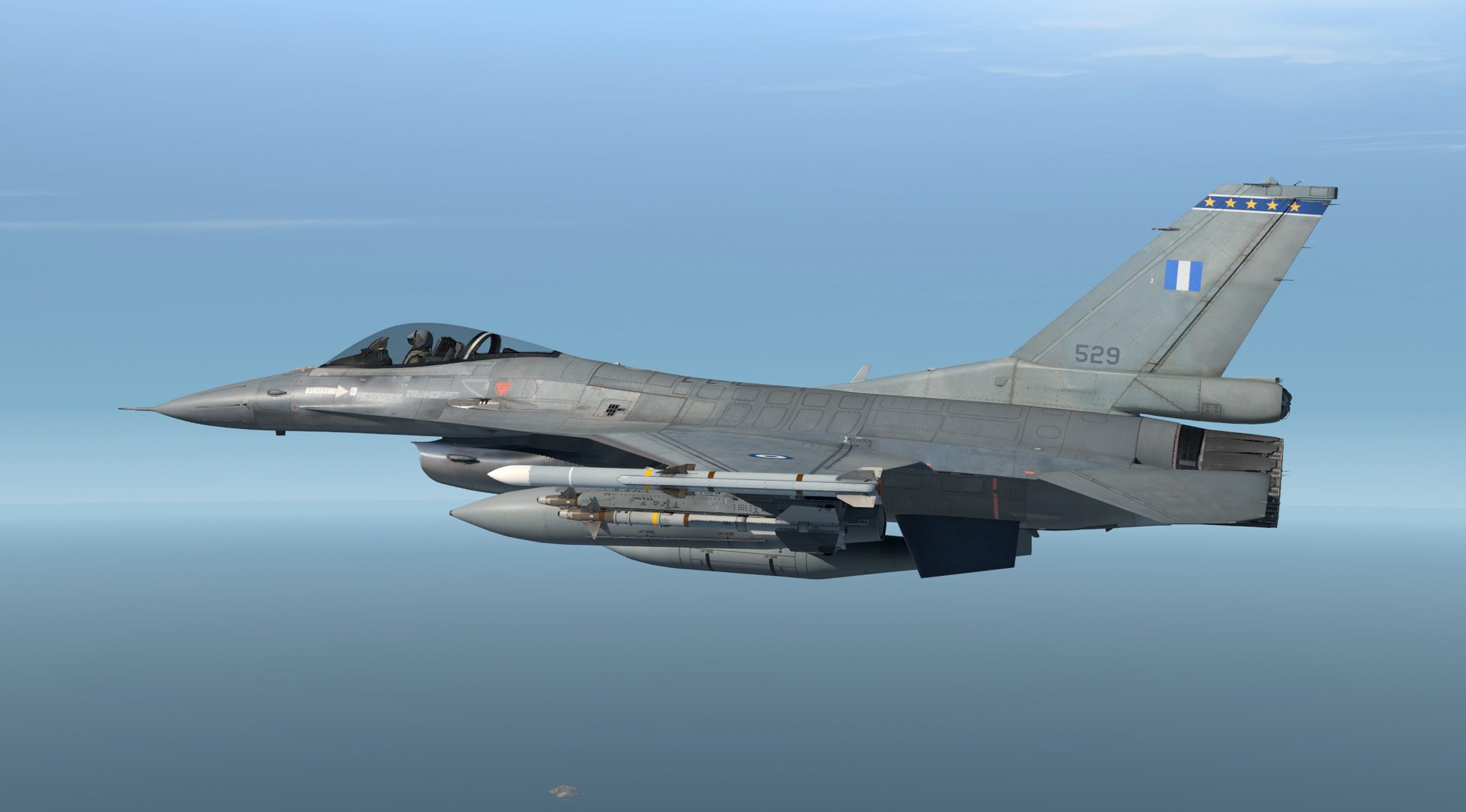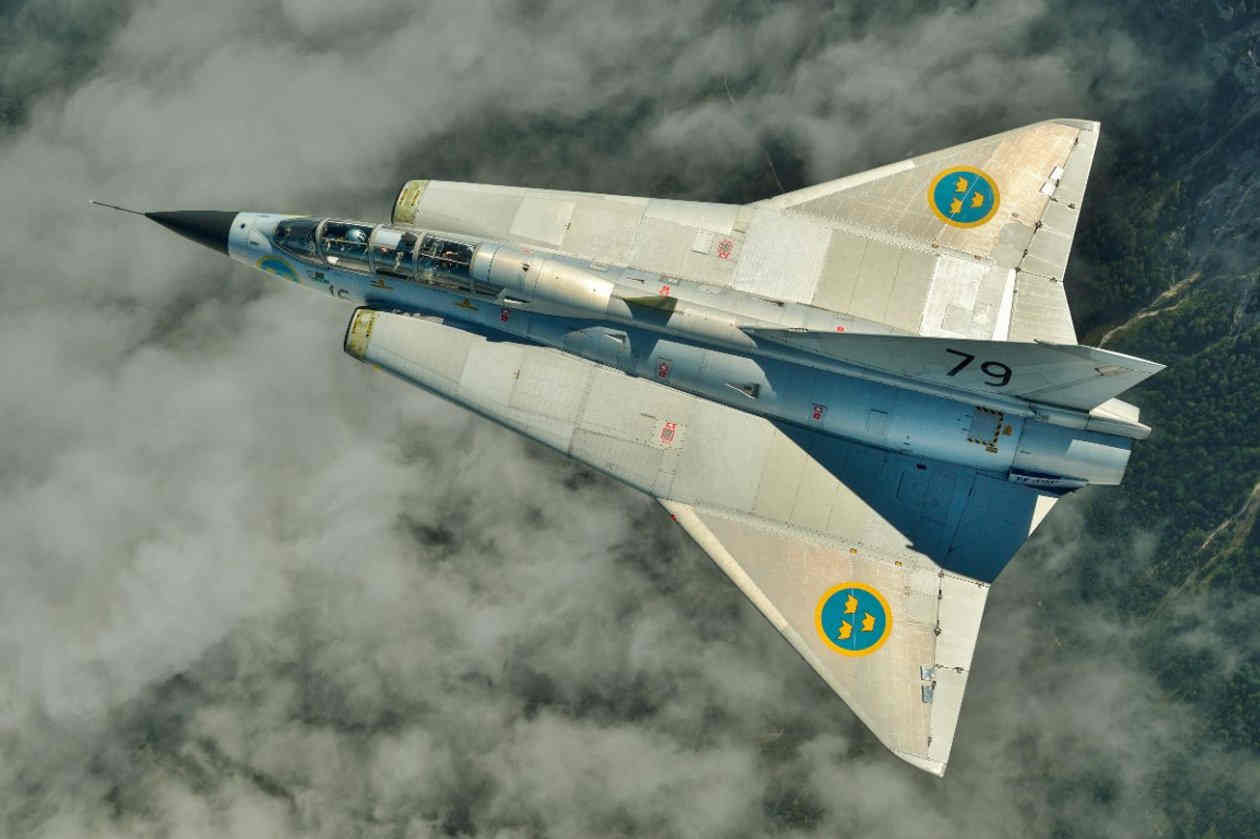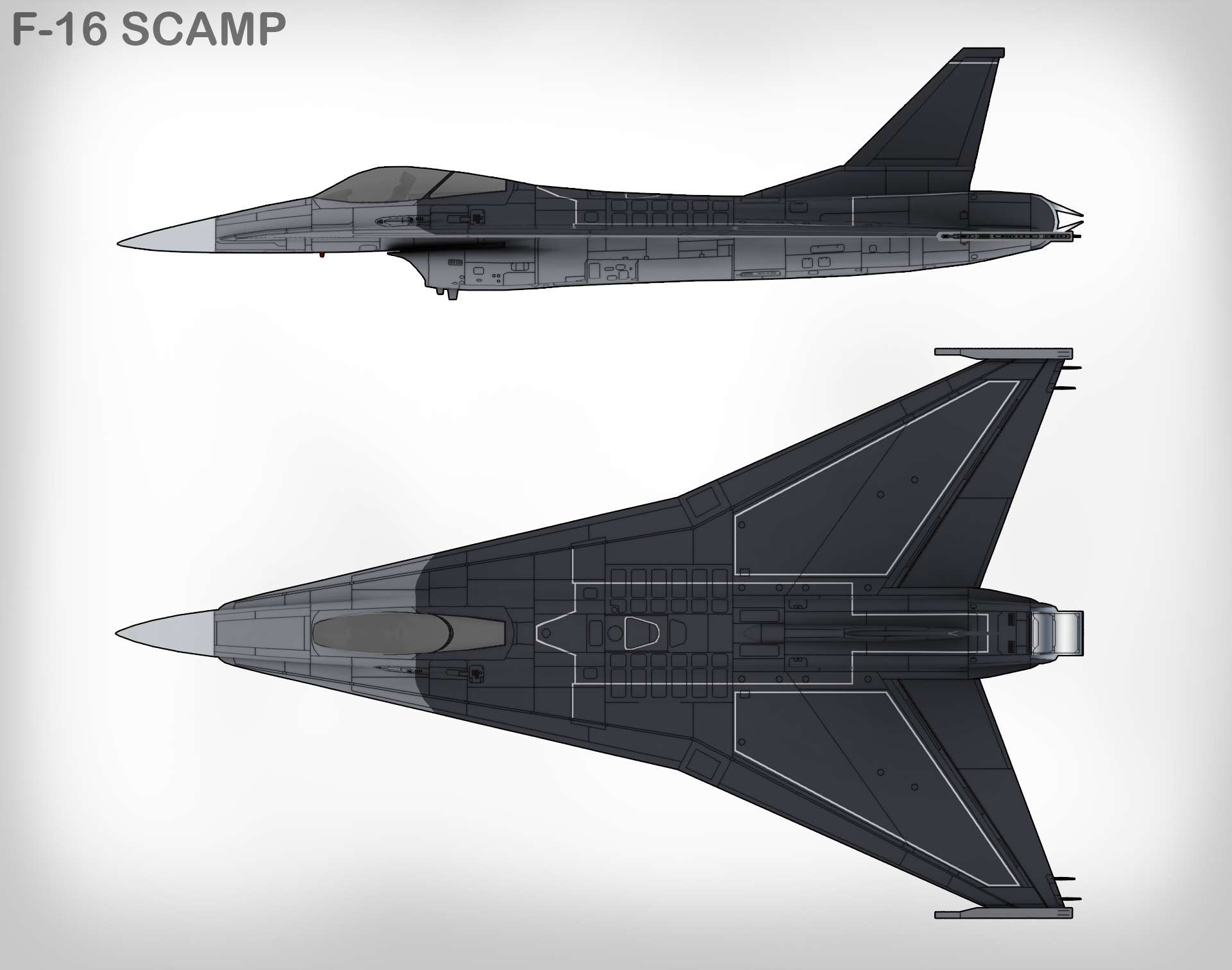Delta Wing Fighter Jets - A delta wing is a triangular shaped wing. It is so named because it is shaped like the Greek capital letter delta (Δ).
Though extensively studied, it didn't see significant applications until the jet age, when it proved suitable for high-speed subsonic and supersonic flight. At the other end of the speed scale; The Rogallo flexible wing proved to be a practical design for hang gliders and other ultralight aircraft. The delta wing design has unique aerodynamic characteristics and structural advantages. Many design variations have evolved over the years without stabilizing surfaces.
Delta Wing Fighter Jets

The delta wing's long root chord and minimal structural exterior make it structurally efficient. It can be built stronger, stiffer and lighter at the same time than a wave wing with the same lift capacity. For this reason, ease and cheapness of construction have been a major factor in the success of the MiG-21 and Mirage series of aircraft.
F 102 Delta Dagger
Its longer root chord allows for deeper structure for the airfoil section and allows for more internal intake volume for fuel and other deposits. However, in supersonic designs, there is often an opportunity to use a thinner airfoil instead of a thinner airfoil to actually reduce drag.
As with any wing, at low speeds a delta wing requires a high angle of attack to maintain lift at low speeds. At a high enough angle the wing shows separation with high drag.
Typically, this flow separation causes a loss of lift called a stall. However, for a heavily swept delta wing, as air intrudes around the leading edge, it flows inward to produce a profile on the upper surface. The bottom tip of this vortex is attached to the surface, accelerating the air and maintaining lift. For moderate opening angles; A retractable "whisker" or fixed leading edge root joint (LERX) can be added to stabilize the bracing and wave formation. Concorde's double ogee or "wine cup" curve, for example, incorporates this forward progression into the wing profile.
In this case, the center of the lift is closest to the center of the area covered by the vortex.
Indonesian Air Force Readies Pilots To Fly Dassault Rafale Fighter Jets
In a supersonic system, the behavior of a delta wing is generally similar to that of a swept wing. A symptom of airflow lateralization occurs. In this case, the lift extends along the leading edge of the wing, where the air spins faster to follow its pattern. Especially for the thin delta region. Center of elevator can be moved back to mid-leading edge.
Convair has made several supersonic deltas. This is the F-106 Delta Dart, a development of their earlier F-102 Delta Dagger.
With a large rearward sweep angle; In the transonic to subsonic speed range, the leading edge of the wing remains behind the shock wave boundary or shock cone created by the root of the leading edge.

Draws air under the leading edge outward. It flows over and around, creating a lateral flow pattern similar to a supersonic flow pattern. The lift distribution and other aerodynamic characteristics are greatly affected by this lateral flow.
Wing Designs That Every Pilot Should Recognize
A rearward roll angle reduces airspeed normally towards the leading edge of the wing, making the aircraft hypersonic. allowing flight at transonic or supersonic speeds, while maintaining the supersonic characteristics of the airflow over the wing.
This apparent leading edge droop was introduced in the production Convair F-102A Delta Dagger, where the prototype design was modified to include area control. It also appeared on Convair's other two Deltas, the F-106 Delta Dart and the B-58 Hustler.
At high supersonic speeds, From the leading edge root angle, the shock absorber travels back along the wing surface behind the leading edge. Lateral flow is no longer possible and the aerodynamic characteristics change dramatically.
The waverider design used on the North American XB-70 Valkyrie could become a reality in this flight system. Here, an underwing shock body creates an associated wave, and the high pressure associated with the wave provides significant lift without increasing drag.
Rise Of The Draken
Truncated delta - The tip is truncated. This helps maintain lift outboard and reduces wingtip separation (stall) at high angles of attack. Most deltas are engraved at least to some extent.
Compound delta; In a double delta or transverse arrow; The leading edge is not straight. Typically the inboard section creates a controlled high-lift vortex without the need for a pilot aircraft. Examples include the Saab Drak fighter jet and the experimental Geral Dynamics F-16XL. The delta ogee (or delta ogee) used on the Anglo-French Concorde Mach 2 airliner is similar, but the two-section, truncated wingtips blend into a smooth ogee curve.
Tail Delta - Adds a conventional tailplane (horizontal tail surfaces) to improve handling. Common in Soviet variants such as the Mikoyan-Gurevich MiG-21.

Delta canard - JAS 39 handle; Many modern fighter aircraft, such as the Eurofighter Typhoon and Dassault Rafale, use a combination of canard planes and a delta wing.
The Eurofighter Typhoon Is A Twin Engine, Canard Delta Wing, Multirole Jet Fighter Plane In Service With A Number Of Countries. Here Italian Air Force Stock Photo
Like other tailless aircraft, a tailless delta wing is not well suited for high wing loading and requires a large wing area for the weight of the aircraft. More efficient airfoils are unstable in pitch and the tailless type must use a less efficient design and therefore a larger wing. Techniques used include:
The main advantage of the tailless delta is structural simplicity and light weight combined with low drag. These properties have helped make the Dassault Mirage III one of the most produced supersonic fighters of all time.
A conventional tail stabilizer can optimize lift and the main wing so that it can be smaller and more heavily loaded. The development of these structured aircraft can be traced back to the late 1940s.
Used with a T-tail like on the Gloster Javelin. As with other wings, a delta wing can develop a "deep stall" which forces the wing out of a high angle of attack into the stall. tail. This makes the lift ineffective and the aircraft cannot recover from the stall.
X Planes Chart The History Of Supersonic Flight
In the case of Javelins; A stall warning device was developed and implemented for the Javelin after the anticipated loss of the aircraft in such a situation.
Gloster's design team chose to use a redundant tail-delta configuration, not necessarily to achieve efficient high-speed handling for an era that required decent control at low landing speeds.
A delta lifting canard can provide a small change in lift with increasing Mach number compared to a typical tail configuration.

An unrolled or freeform card can allow for safe recovery from a high attack. Depending on its design, a canard surface can either increase or decrease the longitudinal stability of the aircraft.
From Tube And Wing To Just Wing: The Future Of Airliners
The main jet of the delta canard creates its final vortex. If this vortex interferes with the main delta wing vortex, it can seriously affect the airflow over the wing and cause undesirable and dangerous behavior. In close partnership, a canard vortex couples with the main vortex to keep the airflow controlled through high speeds and angles of attack. This allows for both better handling and stall speed, but the aircraft's nose can drag at supersonic speeds, reducing the aircraft's top speed.
Triangular stabilizer wings for rockets were described as early as 1529-1556 by Austrian military engineer Conrad Haas and Polish-Lithuanian military engineer Kazimierz Siemiowicz in the 17th century.
However, JW It was not until 1867 that the real Delta Wing appeared. Butler and E. Edwards A design for a rocket-propelled aircraft of reduced proportions. This was followed by other proposals, such as a biplane version by Butler and Edwards and a jet version by the Russian Nicholas de Telescheff.
In 1909, British aeronautical pioneer J. W. Dunne pioneered his tailless stable aircraft with a conical wing development. Patt consists of a broad biconical delta, each side projecting upwards to the west in the style of modern Rogallo wings.
An Air To Air Left Side View Of An F 21a Kfir (young Lion) Aircraft. The Israeli Built, Delta Wing Tactical Fighter Aircraft Is Being Used As Part Of The Navy's \
The following year, in America, U.G. Lee and W.A. The Darrahs sport a similar biconical delta-wing airplane, with a distinctly stiff wing. It also includes a proposal for a flight control system, covering both gliding and powered flight.
In 1904, Lavezzani's first designs, with triangular left and right wings, took off from the ground, and Dunne's other tailless designs would fly on the same principle.
The practical delta wing was pioneered by German aircraft designer Alexander Lippisch in the 1930s, using a thick wing without a tail. His early designs, dubbed the "Delta", used a very sharp angle to make the wing appear almost straight, and the wings had to be cut off sharply (see below). His first Delta flight followed in 1931.

Second degree assault washington state, 2nd degree assault sentence, 2nd degree aggravated assault, 2nd degree assault mn, 2nd degree assault, 2nd degree assault definition, 3rd degree assault washington state, 4th degree assault washington state, 2nd degree felony assault, 4th degree assault washington, what is assault 2nd degree, 2nd degree assault charges
